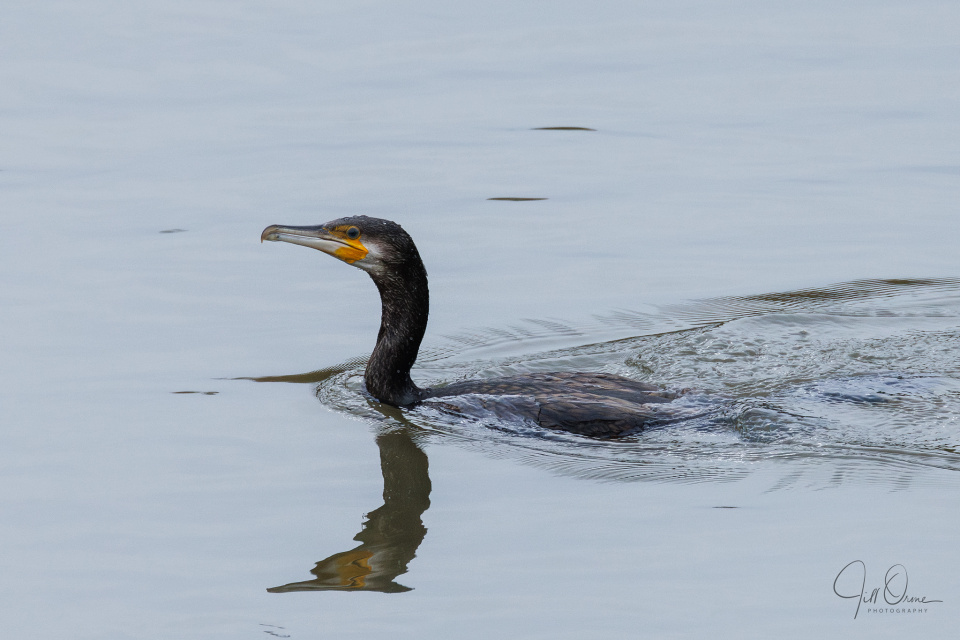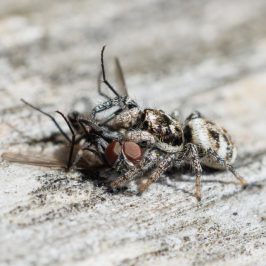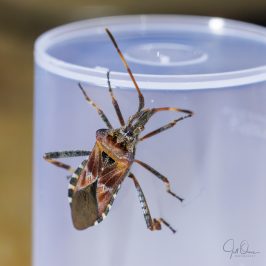I was still lounging about in my jammies, reading an extremely poorly plotted mystery thriller, when R called to say that his walk had just taken him over the Workman Bridge in Evesham, and there were five Cormorants fishing next to it. “Oh. Four now. One just flew off.”
I was washed, dressed and in the car in less than fifteen minutes, and drove straight into a parking space on Waterside, but by the time I reached the bridge there were only two birds left, and they were fishing on the north side, where the light was poor and there was no easy way to get down to water level. Still, a Cormorant was a Cormorant, and I rattled off a good few shots before they also left, flying north towards Offenham.
After I’d met up for coffee with R we went our separate ways, mine taking me down through Abbey Park to the river, where there was a male Mute Swan busking a swathe through the other water fowl, but not much else going on. The delay while I watched this performance served me well though, because I’d only just got back to the Workman Bridge when this Cormorant flew back in from the Offenham direction and landed in one of the big trees in the Workman Gardens, where it stayed for a few minutes before dropping down into the river. I immediately hatched a fantasy that this was the bird R had first seen flying away from the group of five, that the others had all eventually followed and caught up with it, and now it had moved on again because it found the rest of the gang extremely irritating and preferred its own company. I hoped that the other four might turn up to give further weight to this theory, but if they did they’d have found this stretch of river empty of both Cormorants and Photographers: after a couple of minutes the bird took off again, this time heading south, and I went off home to start making lunch.
On looking at my photos later I realised that this bird was at any rate a different individual to the pair I’d photographed when I arrived, because you can tell Cormorants apart, within reason, by differences in their facial markings. If you have absolutely nothing better to do and don’t mind going cross-eyed you can also check, from the angle of the back edge of the yellow patch at the gape to the white skin behind it, relative to the line of the jaw, which of the two sub-species of ‘Great’ Cormorant you’re looking at. This has absolutely no practical use to most of us, but conservationists are interested because of late there has been an increasing influx into eastern England of the ‘European’ race Phalacrocorax carbo sinensis. I was told in Norfolk last week that almost all the Cormorants there are immigrants, though I didn’t look hard at any of the ones I saw, so I can’t confirm the truth of this. Just to save your squint though, I’ve measured this one, and it’s a native Phalacrocorax carbo carbo. You’re welcome.








Leave a Reply
You must be logged in to post a comment.